Optimising Highway Energy Harvesting: A Numerical Simulation Study on Factors Influencing the Performance of Vertical-Axis Wind Turbines
Abstract
:1. Introduction
2. Model Equations for CFD Analysis
2.1. Setup and Modelling Method
2.2. Initial Conditions and Model Assumptions
3. Simulation Work and Designs
3.1. Initial Design Geometries
3.2. Model Mesh
3.3. Mesh Resolution and Quality
3.4. Data Extraction and Handling
3.5. Model Validation and Handling
4. Simulation Results
4.1. Blade Number Variation
4.2. Blade Curvature Angle Variation
4.3. Blade Thickness Variation
4.4. Blade Diameter Ratio Variation
5. Discussions
6. Conclusions
Author Contributions
Funding
Data Availability Statement
Conflicts of Interest
Nomenclature
| Density of air (kg/m3) | |
| t | Time (s) |
| u | X velocity (m/s) |
| v | Y velocity (m/s) |
| Torque coefficient | |
| Power coefficient | |
| Average moment (Nm) | |
| Average Power (W) | |
| Free-stream velocity (m/s) | |
| Turbine radius (outer) (m) | |
| Turbine radius (inner) (m) | |
| A | Turbine area (total) (m2) |
| Tip speed ratio |
References
- Sgouridis, S.; Csala, D.; Bardi, U. The sower’s way: Quantifying the narrowing net-energy pathways to a global energy transition. Environ. Res. Lett. 2016, 11, 094009. [Google Scholar] [CrossRef]
- Tian, W.; Mao, Z.; An, X.; Zhang, B.; Wen, H. Numerical study of energy recovery from the wakes of moving vehicles on highways by using a vertical axis wind turbine. Energy 2017, 141, 715–728. [Google Scholar] [CrossRef]
- Tian, W.; Mao, Z.; Li, Y. Numerical Simulations of a VAWT in the Wake of a Moving Car. Energies 2017, 10, 478. [Google Scholar] [CrossRef]
- Johari, M.K.; Jalil, M.; Shariff, M.F.M. Comparison of horizontal axis wind turbine (HAWT) and vertical axis wind turbine (VAWT). Int. J. Eng. Technol. 2018, 7, 74–80. [Google Scholar] [CrossRef]
- Ragheb, M. Vertical Axis Wind Turbines; University of Illinois at Urbana-Champaign: Champaign, IL, USA, 2011; Volume 1. [Google Scholar]
- Popescu, D.; Popescu, C.; Dragomirescu, A. Flow control in Banki turbines. Energy Procedia 2017, 136, 424–429. [Google Scholar] [CrossRef]
- Quaranta, E.; Perrier, J.P.; Revelli, R. Optimal design process of crossflow Banki turbines: Literature review and novel expeditious equations. Ocean Eng. 2022, 257, 111582. [Google Scholar] [CrossRef]
- Khosrowpanah, S.; Fiuzat, A.; Albertson, M.L. Experimental study of cross-flow turbine. J. Hydraul. Eng. 1988, 114, 299–314. [Google Scholar] [CrossRef]
- D’Ambrosio, M.; Medaglia, M. Vertical Axis Wind Turbines: History, Technology and Applications. Master’s Thesis, Högskolan-Halmstad, Halmstad, Sweden, 2010. [Google Scholar]
- Riegler, H. HAWT versus VAWT: Small VAWTs find a clear niche. Refocus 2003, 4, 44–46. [Google Scholar]
- Carrigan, T.J.; Dennis, B.H.; Han, Z.X.; Wang, B.P. Aerodynamic shape optimization of a vertical-axis wind turbine using differential evolution. Int. Sch. Res. Not. 2012, 2021, 528418. [Google Scholar] [CrossRef]
- Pope, K.; Dincer, I.; Naterer, G. Energy and exergy efficiency comparison of horizontal and vertical axis wind turbines. Renew. Energy 2010, 35, 2102–2113. [Google Scholar] [CrossRef]
- Li, Y.; Yang, S.; Feng, F.; Tagawa, K. A review on numerical simulation based on CFD technology of aerodynamic characteristics of straight-bladed vertical axis wind turbines. Energy Rep. 2023, 9, 4360–4379. [Google Scholar] [CrossRef]
- Somoano, M.; Huera-Huarte, F. Bio-inspired blades with local trailing edge flexibility increase the efficiency of vertical axis wind turbines. Energy Rep. 2022, 8, 3244–3250. [Google Scholar] [CrossRef]
- Alpha 311. Available online: https://alpha-311.com/ (accessed on 10 March 2023).
- Manathunga, D.; Karurarathna, T.; Kanchana, I.; Wettasinghe, J. Design and Development of Vertical Axis Wind Turbine for Power Generation in Expressways; University of Vocational Technology: Dehiwala-Mount Lavinia, Sri Lanka, 2021. [Google Scholar]
- Wikantyoso, F.; Oktavitasari, D.; Tjahjana, D.; Hadi, S.; Pramujati, B. The Effect of Blade Thickness and Number of Blade to Crossflow Wind Turbine Performance using 2D CFD Simulation. Int. J. Innov. Technol. Explor. Eng. 2019, 8, 17–21. [Google Scholar]
- Tjahjana, D.D.D.P.; Purbaningrum, P.; Hadi, S.; Wicaksono, Y.A.; Adiputra, D. The study of the influence of the diameter ratio and blade number to the performance of the cross flow wind turbine by using 2D computational fluid dynamics modeling. AIP Conf. Proc. 2018, 1931, 030034. [Google Scholar]
- Zheng, M.; Li, Y.; Teng, H.; Hu, J.; Tian, Z.; Zhao, Y. Effect of blade number on performance of drag type vertical axis wind turbine. Appl. Sol. Energy 2016, 52, 315–320. [Google Scholar] [CrossRef]
- Yahya, W.; Ziming, K.; Juan, W.; Qurashi, M.S.; Al-Nehari, M.; Salim, E. Influence of tilt angle and the number of guide vane blades towards the Savonius rotor performance. Energy Rep. 2021, 7, 3317–3327. [Google Scholar] [CrossRef]
- Solidworks, 2022 Student Edition. 2022. Available online: https://www.solidworks.com/product/students (accessed on 10 March 2023).
- Tian, W.; Song, B.; Mao, Z. Numerical investigation of wind turbines and turbine arrays on highways. Renew. Energy 2020, 147, 384–398. [Google Scholar] [CrossRef]
- Ansys, 2022 R2 Student Edition. 2022. Available online: https://www.ansys.com/en-gb/academic/students/ansys-student (accessed on 10 March 2023).
- Bani-Hani, E.H.; Sedaghat, A.; Al-Shemmary, M.; Hussain, A.; Alshaieb, A.; Kakoli, H. Feasibility of highway energy harvesting using a vertical axis wind turbine. Energy Eng. 2018, 115, 61–74. [Google Scholar] [CrossRef]
- Shah, S.R.; Kumar, R.; Raahemifar, K.; Fung, A.S. Design, modeling and economic performance of a vertical axis wind turbine. Energy Rep. 2018, 4, 619–623. [Google Scholar] [CrossRef]
- Barth, T.; Ohlberger, M. Finite Volume Methods: Foundation and Analysis; John Wiley & Sons, Ltd.: Hoboken, NJ, USA, 2003. [Google Scholar]
- Matyushenko, A.; Garbaruk, A. Adjustment of the k-ω SST turbulence model for prediction of airfoil characteristics near stall. J. Phys. Conf. Ser. 2016, 769, 012082. [Google Scholar] [CrossRef]
- Menter, F.R. Two-equation eddy-viscosity turbulence models for engineering applications. AIAA J. 1994, 32, 1598–1605. [Google Scholar] [CrossRef]
- Tabib, M.; Siddiqui, M.S.; Rasheed, A.; Kvamsdal, T. Industrial scale turbine and associated wake development-comparison of RANS based Actuator Line Vs Sliding Mesh Interface Vs Multiple Reference Frame method. Energy Procedia 2017, 137, 487–496. [Google Scholar] [CrossRef]
- Wenlong, T.; Baowei, S.; Zhaoyong, M. A numerical study on the improvement of the performance of a banki wind turbine. Wind Eng. 2014, 38, 109–116. [Google Scholar] [CrossRef]
- Matias, I.J.T.; Danao, L.A.M.; Abuan, B.E. Numerical Investigation on the Effects of Varying the Arc length of a Windshield on the Performance of a Highway Installed Banki Wind Turbine. Fluids 2021, 6, 285. [Google Scholar] [CrossRef]
- Ansys Fluent User’s Guide, 12.3.1 Near-Wall Mesh Guidelines; Ansys Fluent Inc.: Lebanon, NH, USA, 2009.
- Ansys Fluent User’s Guide, 6.2.2 Mesh Quality; Ansys Fluent Inc.: Lebanon, NH, USA, 2009.
- Ansys Mesh Quality Pdf. Available online: https://featips.com/wp-content/uploads/2021/05/Mesh-Intro_16.0_L07_Mesh_Quality_and_Advanced_Topics.pdf. (accessed on 21 April 2023).
- Dessaint, L.; Nakra, H.; Mukhedkar, D. Propagation and elimination of torque ripple in a wind energy conversion system. IEEE Trans. Energy Convers. 1986, 104–112. [Google Scholar] [CrossRef]
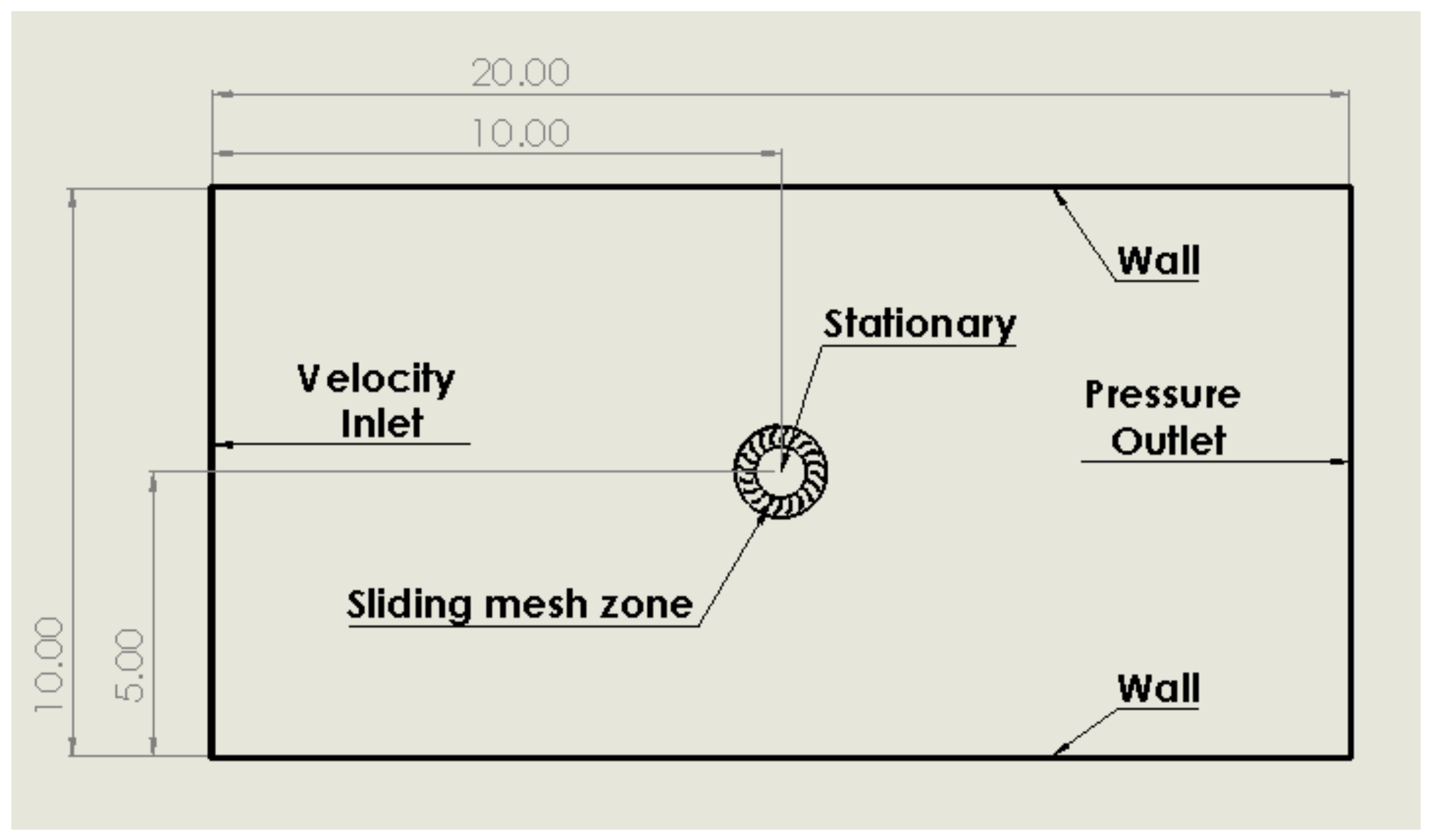


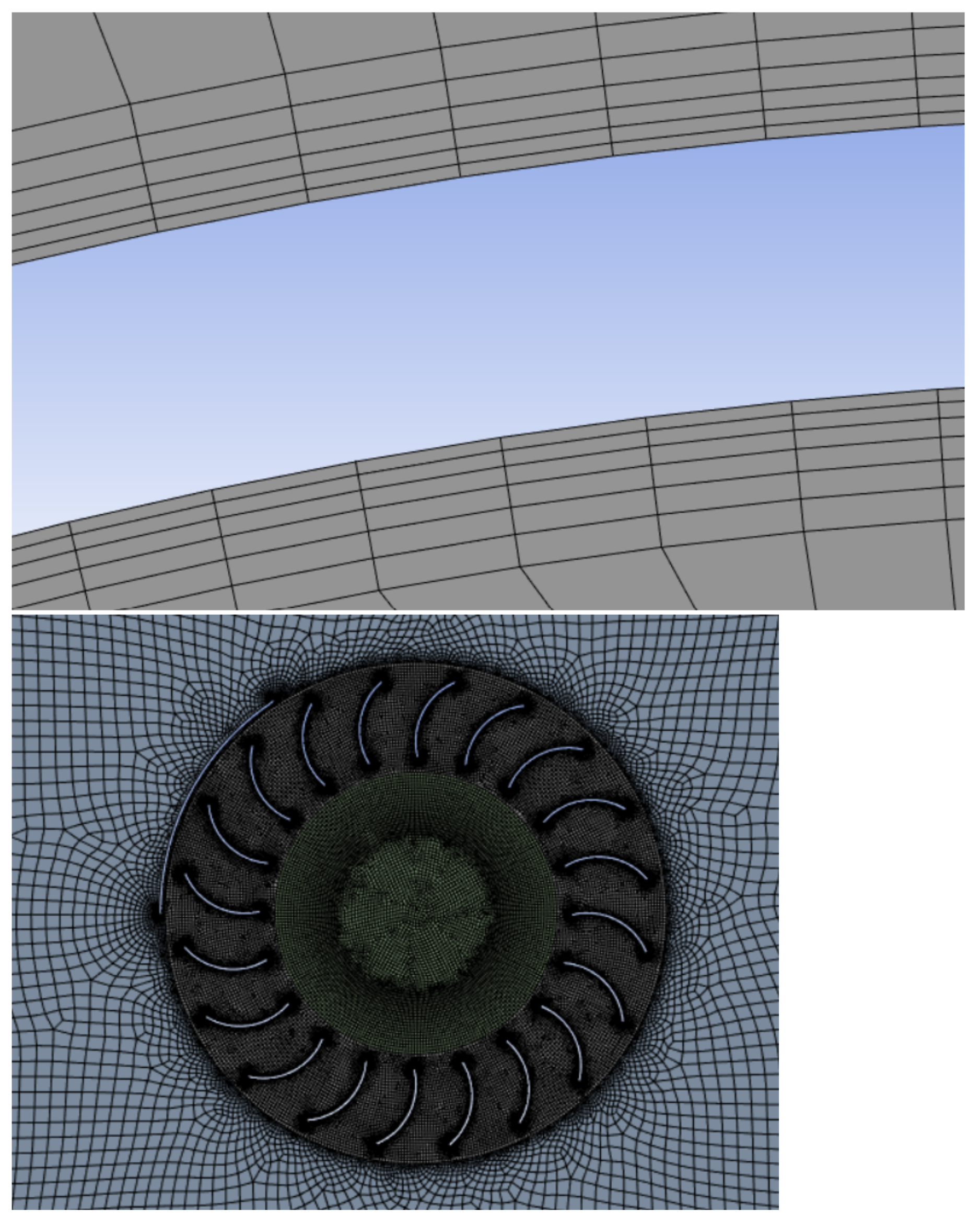
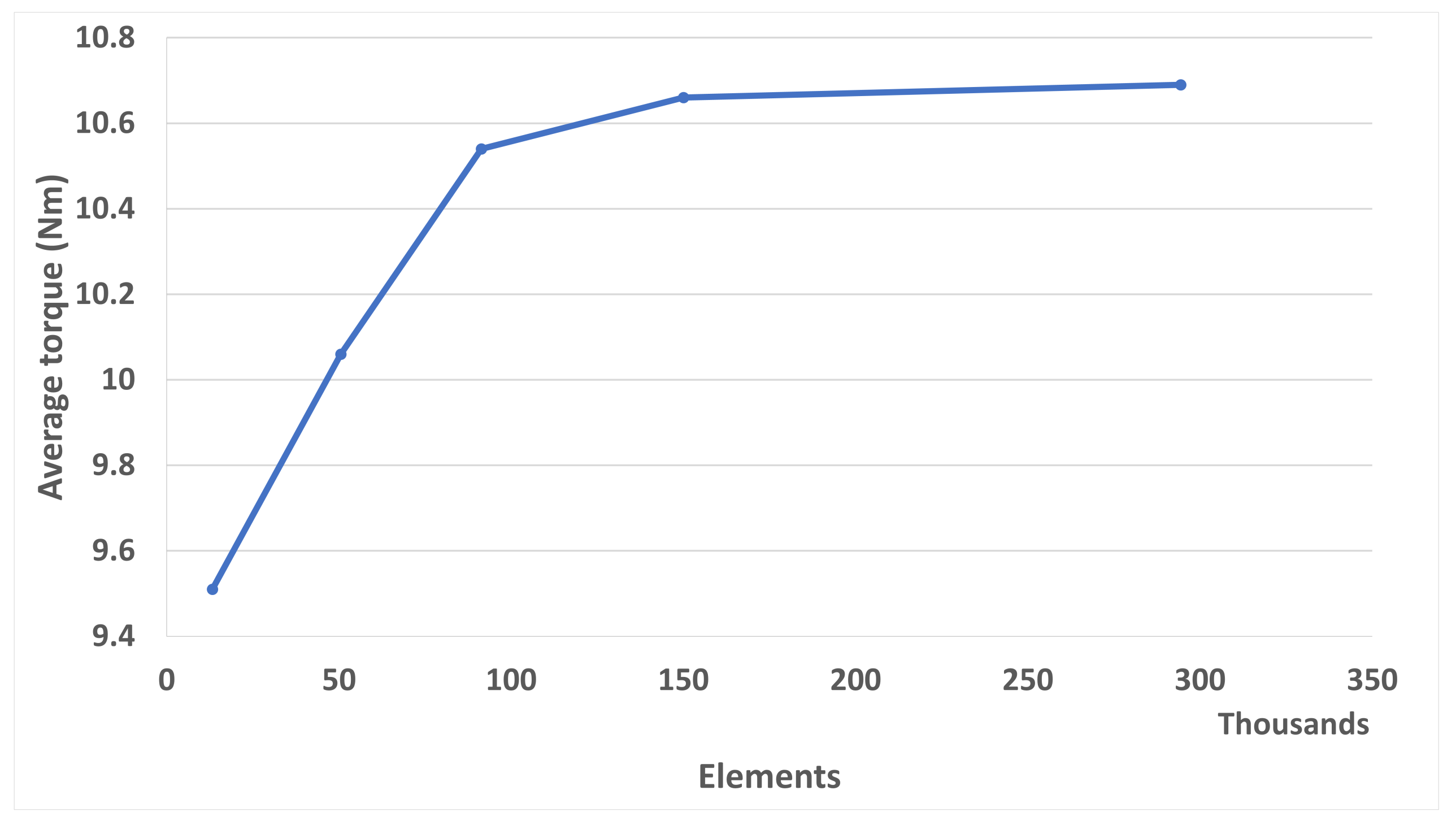

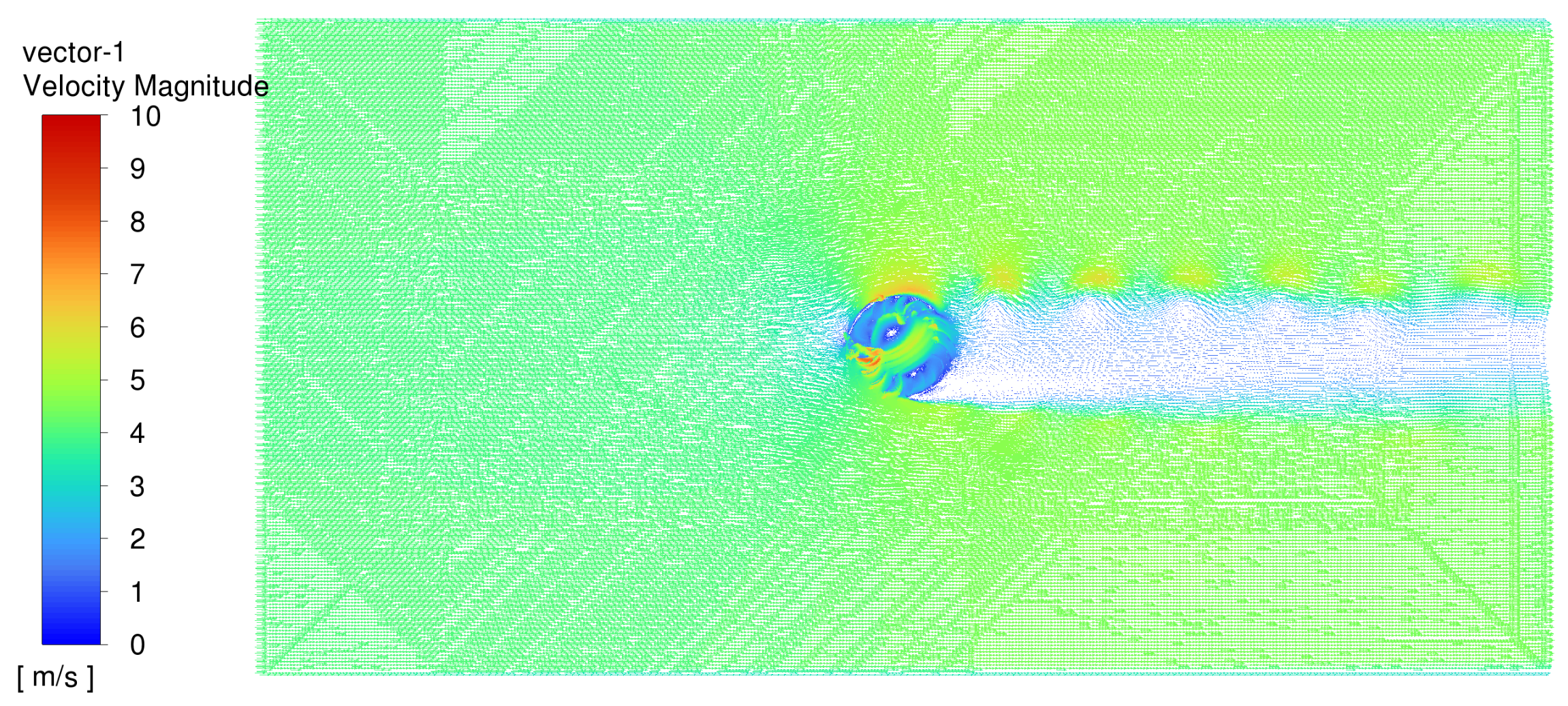

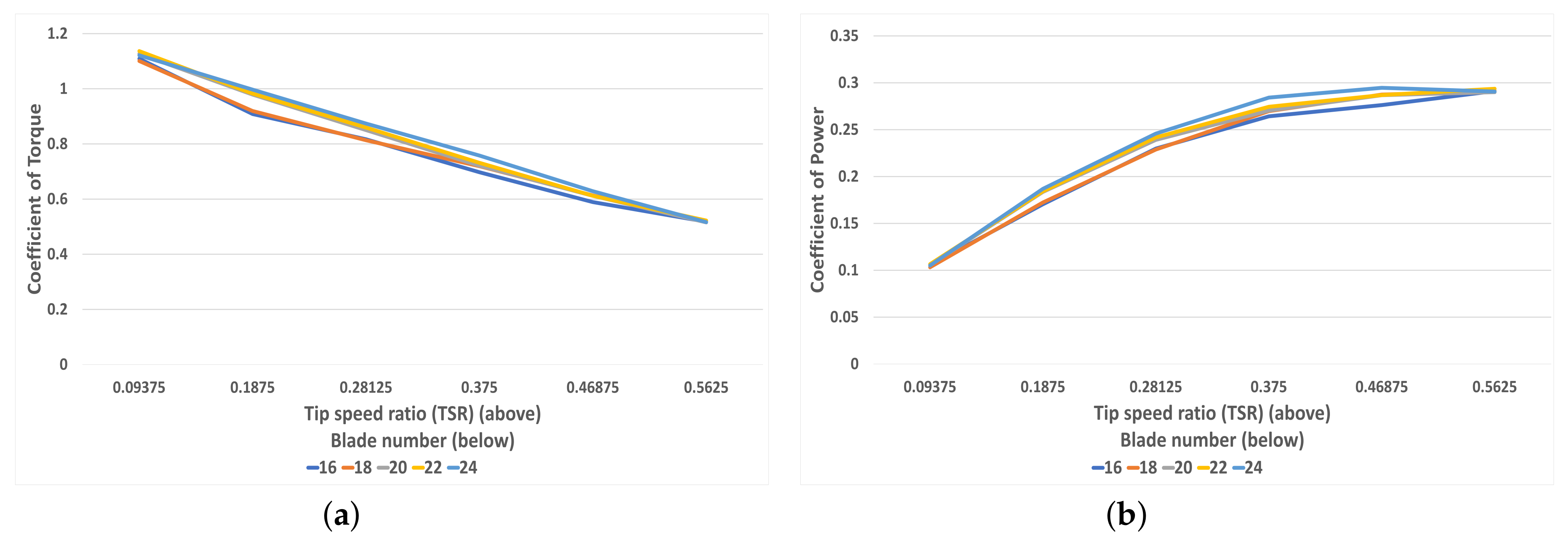
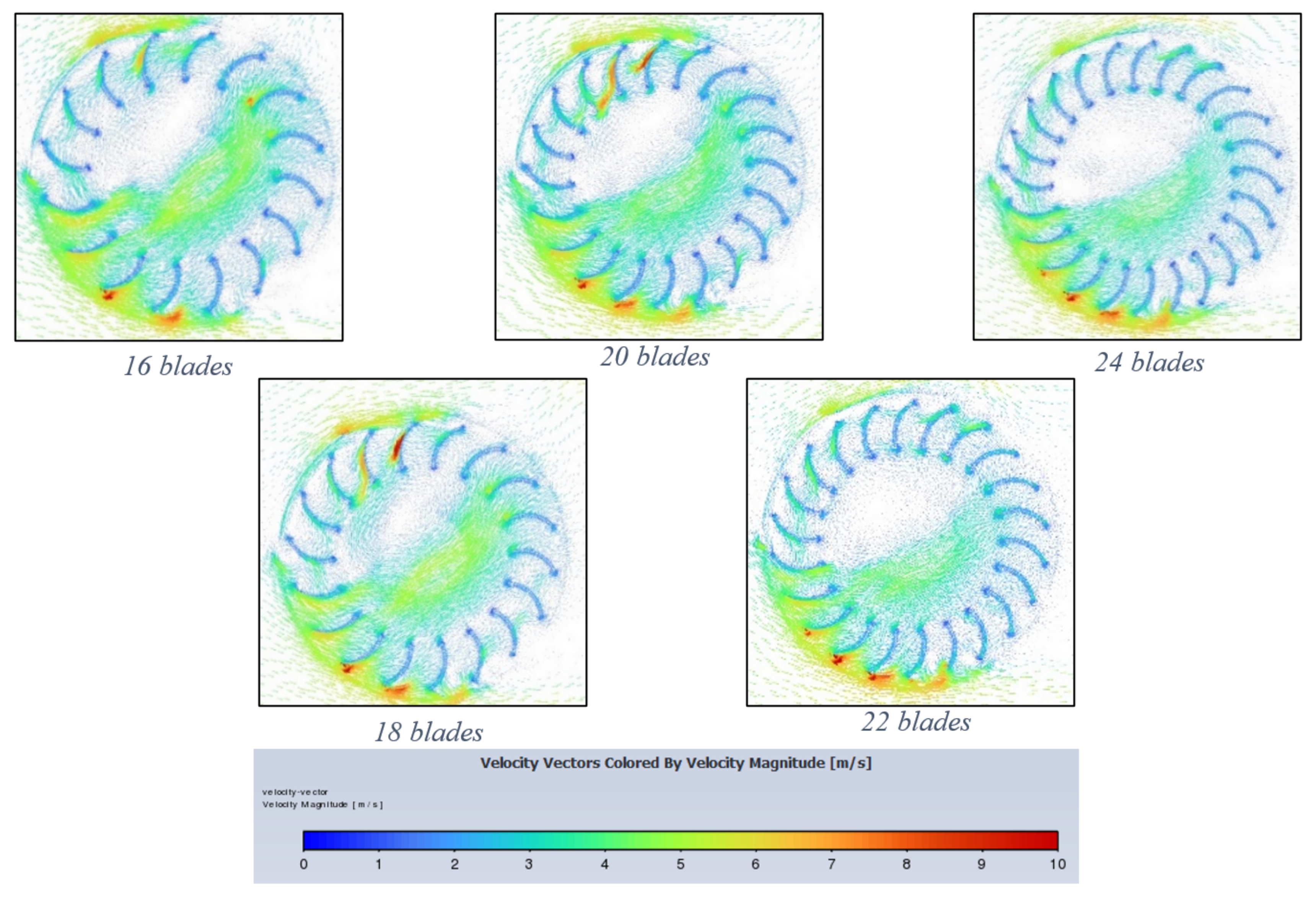


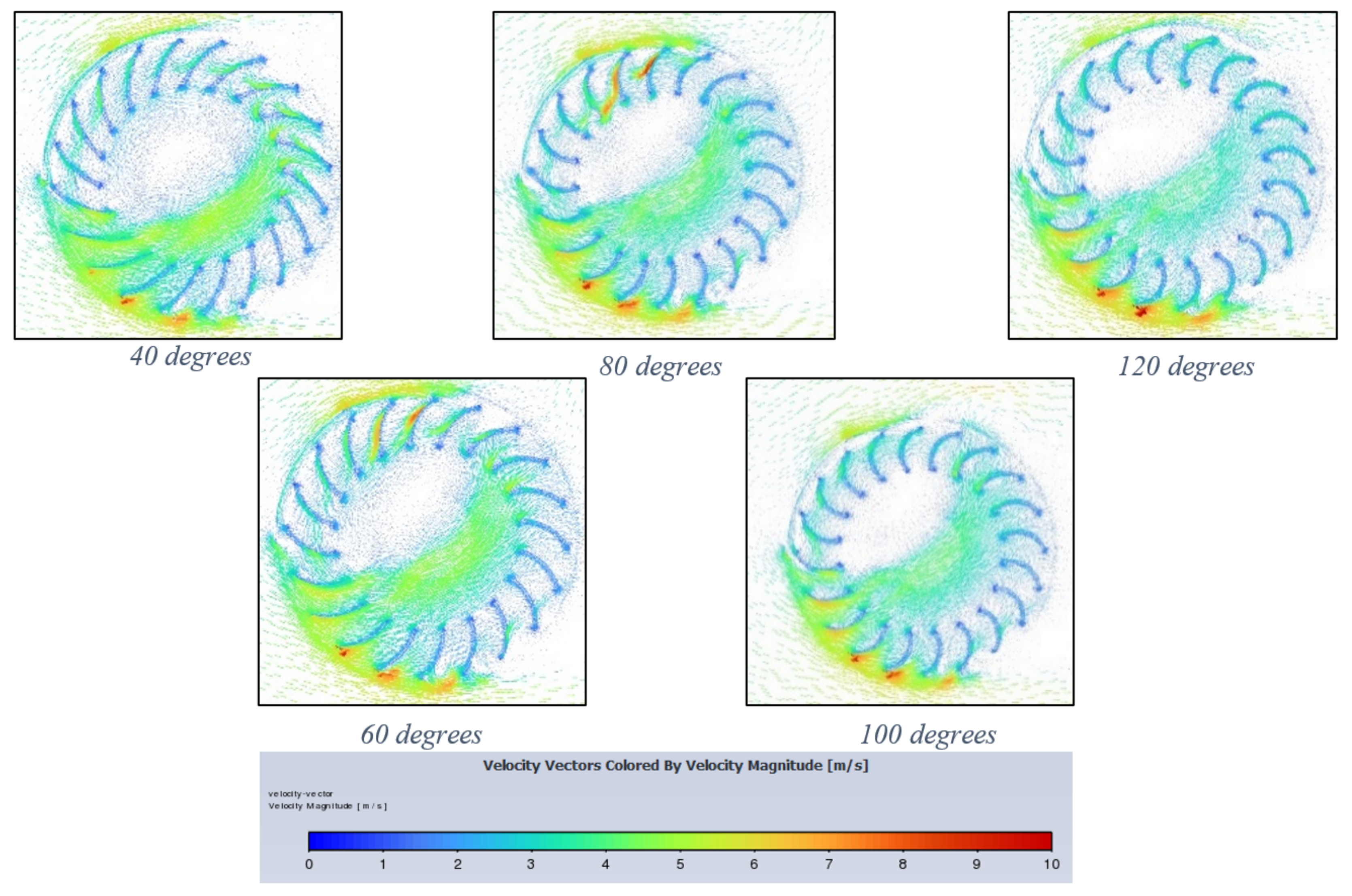




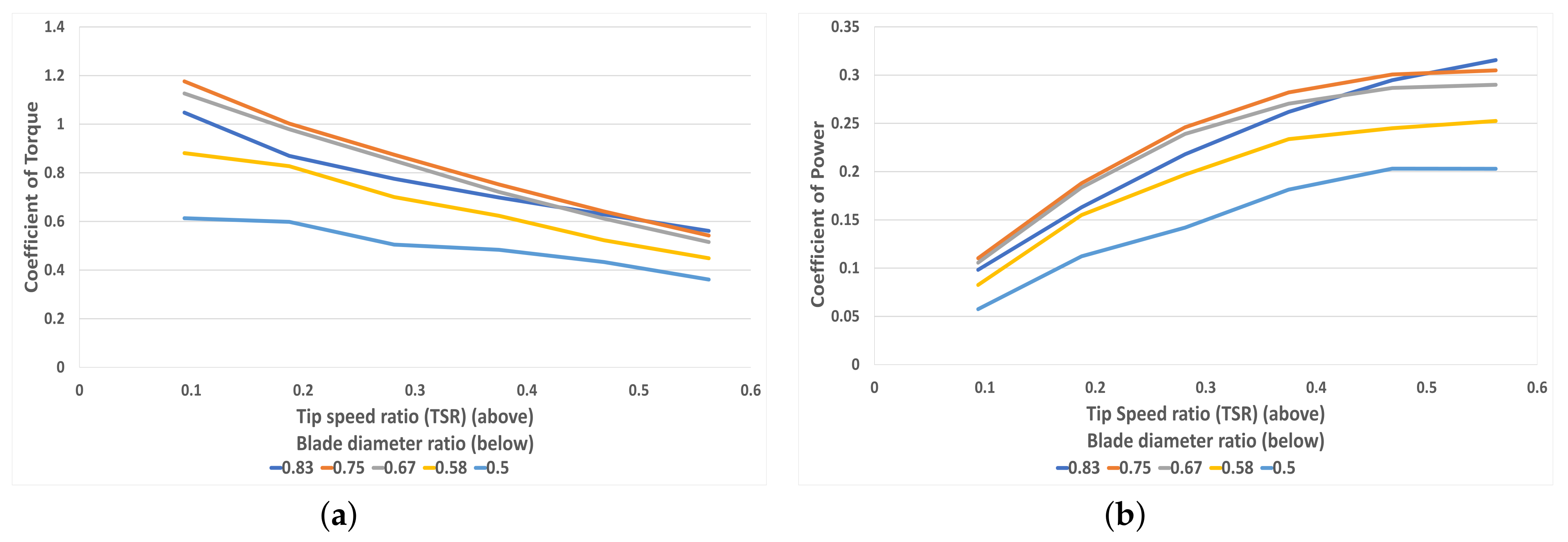

| Mesh Metric | Min | Max | Average | Standard Deviation |
|---|---|---|---|---|
| Orthogonal quality | 0.38138 | 1 | 0.98906 | |
| Aspect ratio | 1 | 7.0033 | 1.2256 | 0.85156 |
| Skewness | 0.8873 | 0.10151 |
| Characteristic Geometry | Peak Power Coefficient | TSR | % Difference from the Baseline |
|---|---|---|---|
| 24 blades | 0.295 | 0.46875 | +2.7% |
| 15 mm thickness | 0.300 | 0.5625 | 3.4% |
| 0.83 blade diameter ratio | 0.316 | 0.5625 | +9.0% |
| 100-degree curvature | 0.331 | 0.5625 | +14.1% |
Disclaimer/Publisher’s Note: The statements, opinions and data contained in all publications are solely those of the individual author(s) and contributor(s) and not of MDPI and/or the editor(s). MDPI and/or the editor(s) disclaim responsibility for any injury to people or property resulting from any ideas, methods, instructions or products referred to in the content. |
© 2023 by the authors. Licensee MDPI, Basel, Switzerland. This article is an open access article distributed under the terms and conditions of the Creative Commons Attribution (CC BY) license (https://creativecommons.org/licenses/by/4.0/).
Share and Cite
Lee, O.M.; Baby, D.K. Optimising Highway Energy Harvesting: A Numerical Simulation Study on Factors Influencing the Performance of Vertical-Axis Wind Turbines. Energies 2023, 16, 7245. https://doi.org/10.3390/en16217245
Lee OM, Baby DK. Optimising Highway Energy Harvesting: A Numerical Simulation Study on Factors Influencing the Performance of Vertical-Axis Wind Turbines. Energies. 2023; 16(21):7245. https://doi.org/10.3390/en16217245
Chicago/Turabian StyleLee, Oliver Mitchell, and Devika Koonthalakadu Baby. 2023. "Optimising Highway Energy Harvesting: A Numerical Simulation Study on Factors Influencing the Performance of Vertical-Axis Wind Turbines" Energies 16, no. 21: 7245. https://doi.org/10.3390/en16217245
APA StyleLee, O. M., & Baby, D. K. (2023). Optimising Highway Energy Harvesting: A Numerical Simulation Study on Factors Influencing the Performance of Vertical-Axis Wind Turbines. Energies, 16(21), 7245. https://doi.org/10.3390/en16217245






